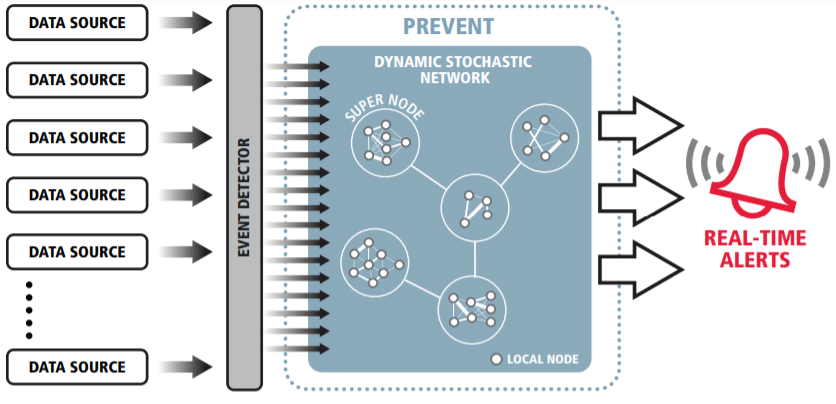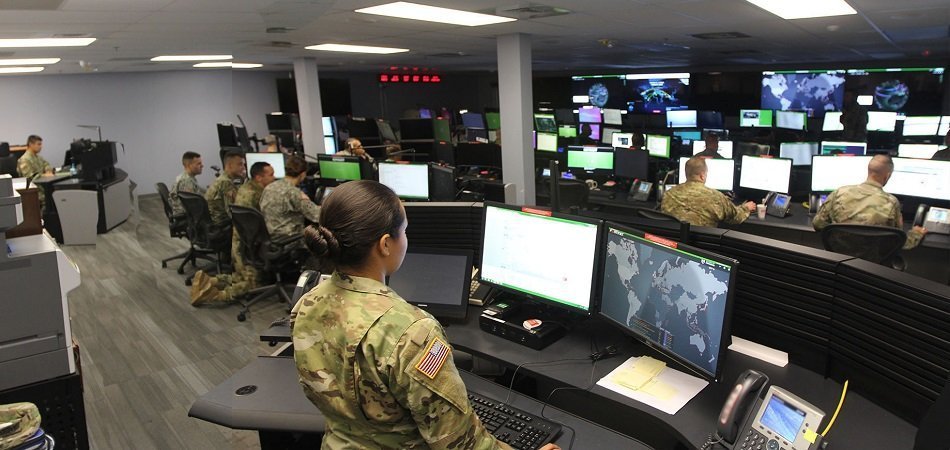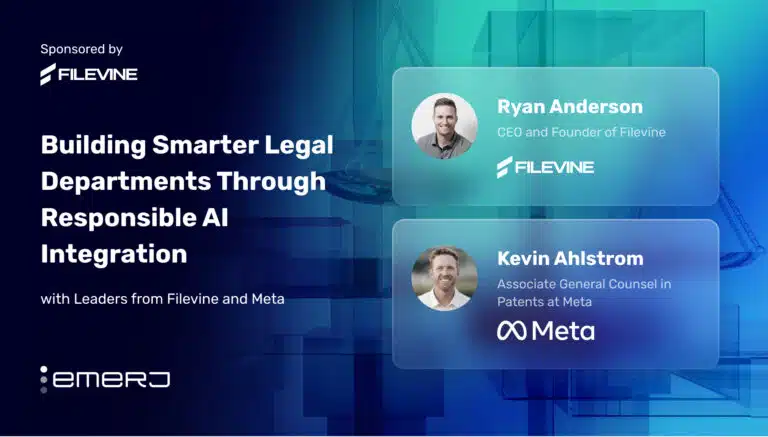wikiMany of the pivotal technologies utilized by the public today have their roots in military projects. The internet’s first successful message transfer was due to a U.S. Department of Defense-awarded contract in 1969 for the development of the “ARPANET project.” Global Positioning System (GPS) technology utilized in smartphones today was put in place and created in the 1970s for accurate military positioning, coordination, and tracking.
It follows that keeping abreast with the current applications of artificial intelligence at the top five military defense contractors can be fruitful for business leaders looking for successful examples of the implementation of AI today. These examples could also illuminate the near-term business capabilities of AI in the business world.
This article serves to present a broad look at the implementation of AI by the five leading defense contractors in the U.S. as ranked by total revenue. Many of these companies have a number of projects that involve AI, and so we can’t cover all of them.
Additionally, with the burgeoning and new field of AI could come a large strategic advantage to those militaries capable of utilizing it over the militaries and governments that struggle to develop it. It would then stand to reason that some of the projects or contracts currently worked on by these top contractors may be highly classified and thus bear limited or no information on them to the public. The US Department of Defense does create and administer such projects, known as Special Access Program (SAP) or black projects. Examples include a project that developed the F-117 Nighthawk stealth attack aircraft by Lockheed Martin and the B-2 Spirit stealth bomber by Northrop Grumman. Both of these projects were highly classified and denied as even existing until their public announcement in 1983 and 1997 respectively.
Many of the initiatives outlined in this report reference DARPA. DARPA stands for Defense Advancement Research Projects Agency, and it acts to make investments in innovative technologies to aid the United States military. DARPA has 220 government employees and acts as both a developer and management structure of US military and private sector partnerships for the development of innovative technologies. If defense contractors are hired to work on new US military technology projects, it is likely DARPA is the authority the contractor will answer to for continued renewal of research contracts (or grants) for the US military and the agency granting approval for cutting the check.
In attempts to expedite and streamline the research and development of AI initiatives at the US Department of Defense (DoD), the DoD announced the creation of JAIC (Joint Artificial Intelligence Center) on June 27th, 2018. The project is lead by Dana Deasy, former CIO at JP Morgan Chase and current CIO at the Pentagon. JAIC is essentially a new branch of DARPA, and under DARPA’s administration and budget.
JAIC seems to symbolize DARPA’s newfound prioritization of AI projects for military use. Acting Secretary of Defense Shanahan wrote in his memo signifying the creation of JAIC:
This effort is a Department priority. Speed and security are of the essence…I expect all offices and personnel to provide all reasonable support necessary to make rapid enterprise-wide AI adoption a reality.
We’ll explore the applications of each contractor one-by-one. The top 5 US contractors below have been rank-ordered by their size, starting with Lockheed Martin, the largest.
1. Lockheed Martin Corp. (NYSE: LMT)
In 2017, Lockheed Martin reported $51 billion in revenue, $35.2 Billion reported from contracts with the US Government. This makes Lockheed Martin the largest contractor for the US military and the largest military contractor in the world. Established in 1995, Lockheed Martin is a publicly-traded company that employs over 100,000 people. Much of Lockheed Martin’s AI technology research and development is executed by a fully-owned subsidiary company, Advanced Technologies Laboratories (ATL).
Lockheed Martin reported $1.2 billion in research and development spending in 2017, but the company only highlights or alludes to artificial intelligence or machine learning once within their annual report. It reports they “demonstrated an array of remotely piloted and autonomous vehicles for military, civilian, and commercial applications.” Determining Lockheed Martin’s monetary commitments to their programs that involve AI is difficult without inside knowledge; however, we believe a portion of their $1.2 billion dollars in R&D spending is allocated to an autonomous drone initiative and Convoy Active Safety Technology (CAST). The autonomous drone initiative was reported on in our piece entirely on Lockheed Martin’s AI applications for the military.
Convoy Active Safety Technology is a system installed on military vehicles designed to make them semi-autonomous. Should soldiers driving in the middle of a convoy suddenly come under enemy fire, the CAST-equipped vehicle can lock-on to the vehicle ahead of it and drive itself using machine vision. This could give the operator in the driver’s seat the opportunity to better defend themselves in the heat of battle.
Below is a 1-minute video showing how the CAST system works:
2. The Boeing Co. (NYSE: BA)
In 2017, Boeing Defense, the predominantly non-commercial division of Boeing that focuses on government contracts, reported $29.5 billion in revenue. This makes it the second largest defense contractor for the US military and the world. Boeing, established in 1916, is a publicly-traded company that employs over 120,000 people.
Boeing reported $3.2 billion dollars in research and development spending in 2017. $834 million of that figure was specifically in the Defense, Space & Security category. As detailed in our report on AI at Boeing, Boeing is attempting to pioneer the military use of autonomous craft for sea, space, and air, showcasing ten separate autonomous military sea, space, and air vehicles on their website.
The autonomous vehicle with the most real-world use case is the RQ-21A Blackjack. The Blackjack is intended to have autonomous flight time endurance of 16+ hours per day depending on the configurations of the plane’s tools and payloads. This UAV is Currently flown by Marine Unmanned Aerial Vehicle Squadron 1 and 2 (VMU-1 and VMU-2), supporting expeditionary operations worldwide.
Below is a short 3-minute video demonstrating how Blackjack takes off, flies, and lands:
Autonomous vehicles rely heavily on machine vision. Machine vision is a form of artificial intelligence that applies machine learning to labeled images and video data captured by a camera. A more in-depth explanation of how autonomous vehicles work using machine vision can be found in our report on machine vision in the military.
On August 1st of 2018, Boeing announced the Boeing Aerospace & Autonomy Center, which will house employees from Boeing and subsidiary Aurora Flight Sciences who “will focus on designing, building and flying autonomous aircraft and developing enabling technologies.”
3. General Dynamics Corp. (NYSE: GD)
General Dynamics Corp.’s reported total revenue for 2017 was $30.97 billion, making it the third largest US military defense contractor. General Dynamics, founded in 1899, is a publicly-traded company that employs 98,600 people.
Our research yielded very little AI-based initiatives at General Dynamics, although as is the trend in big business today, innovative projects utilizing AI seem to be just taking root at General Dynamics. The company published a press release specifically noting that their 2018 hackathon had an AI innovation theme. Hackathons are multi-day, department-wide events meant to bring together company employees and generate valuable brainstorming, as well as intra-department team building.
Dozens of data scientists, analysts, and programmers formed 11 teams that competed in a series of technical challenges, each designed to stretch skills and expose team members to various machine learning data analytics tools, like Amazon Machine Learning. As teams worked at their tasks, they also had to prevent attacks from an expert “Red Team” that emulated the persistent real-world cyber threats by continuously probing and disrupting their efforts. This seems to be an effective strategy to familiarize data teams with AI tools quickly. That said, the hackathon event was a two-day event and could indicate the general novelty of AI at General Dynamics today.
General Dynamics’s 2017 Annual report mentions their research and development spending as a means “to enhance innovation and bring new products to market, 2017 company-sponsored research and development rose to $521 million from $418 million, the fourth consecutive annual increase.” That said, there is no direct mention of machine learning technologies or innovations within their entire 2017 report.
General Dynamic does appear to partner with other companies utilizing AI. The company seems to have a direct partnership with a company that has a DARPA-sponsored natural language processing software company called Netowl. Netowl has three core machine learning and natural language software. One is a text and image analytics software meant to produce accurate document processing and multi-lingual name matching to aid in border security and counterterrorism.
4. Northrop Grumman Corp. (NYSE: NOC)
Northrop Grumman Corp. reported total revenue for 2017 was $25.80 billion, making it the fourth largest US military defense contractor in the United States. Northrop Grumman merged in 1994 and is a publicly traded company that employs 70,000 people.
Northrop Grumman seems to have the largest focus on artificial intelligence within its annual report, directly mentioning AI and its autonomous aircraft numerous times. Illuminating Northrop Grumman’s focus on AI, “Autonomous systems” is represented as one of Northrop Grumman’s three sections of their aerospace revenue. $639 million was spent on research and development by Northrop Grumman in 2017, specifically stating a large majority of this $639 million figure was assigned to government programs.
In 2013, Northrop Grumman’s X-47B autonomous aircraft, operating under a DARPA contract, successfully conducted autonomous takeoff and recoveries on an aircraft carrier. Aircraft carrier take-off and landing is considered one of the most challenging feats of piloting for human pilots today. In 2015, the X-47B would later conduct the first autonomous mid-air refueling, as shown in the 2-minute video below. Both of these feats of aviation might show the capability of autonomous aircraft to complete the administrative tasks necessary for an autonomous aircraft wartime deployment.
Northrop Grumman also offers Blue Wasp, a software utilizing artificial intelligence for monitoring and early detection of possible hostile forces. This is a direct competitor to Raytheon’s PREVENT program. Similar to PREVENT, Blue Wasp catalogues traffic patterns of a monitored seascape and then identifies deviations from those traffic patterns to foreshadow possible coming conflict.
5. Raytheon Company (NYSE: RTN)
Raytheon reported their total revenue for 2017 was $25.35 billion, making it the fifth largest US military defense contractor in the United States. Raytheon, founded in 1989, is a publicly-traded company that employs 64,000 people.
In 2017, Raytheon reported $734 million in research and development costs, noting specifically those costs are primarily from US government contracts. Raytheon noted in its annual report that it was working on contracts with DARPA, the U.S. Air Force Research Laboratory and many other military research initiatives.
Raytheon seems to be the US defense contractor with the second most attention to artificial intelligence, next to Northrop Grumman. Topics of innovation in AI and computing for AI are referenced at least one time each in their annual report, compared to the other companies in this report which rarely mention AI at all. Raytheon states part of their research initiatives are as follows:
To improve the speed and power of computers used in intelligence analytics, we’re testing quantum processing technologies that may hold the keys to advanced encryption technologies, artificial intelligence, and machine learning, and more accurate radars. To meet growing demand for deterrence, we’re pioneering semi-autonomous warfare technologies that bring together warfighters, computers, and robots to speed decision-making
and targeting.
Under the Cybersecurity and Special Missions category of the 2017 annual report, Raytheon states “[Cybersecurity and Special Missions] designs and implements…quick-reaction solutions, as well as high-consequence special mission support, for the U.S. Intelligence Community, the DoD, civilian federal agencies.” This could refer to the PREVENT system Raytheon showcased in its 2018 issue of “Technology Today”, a digital magazine detailing Raytheon’s research efforts to the public.

PREVENT detects emergent group threat behaviors by computing and evaluating the normal traffic patterns of a surveyed region. Prevent is able to provide early warning to operators based on this detection to conduct further analysis on the identified participants involved in the irregular activity. Below is a chart from Raytheon showing how their PREVENT system works:
Header Image Credit: US Army





















